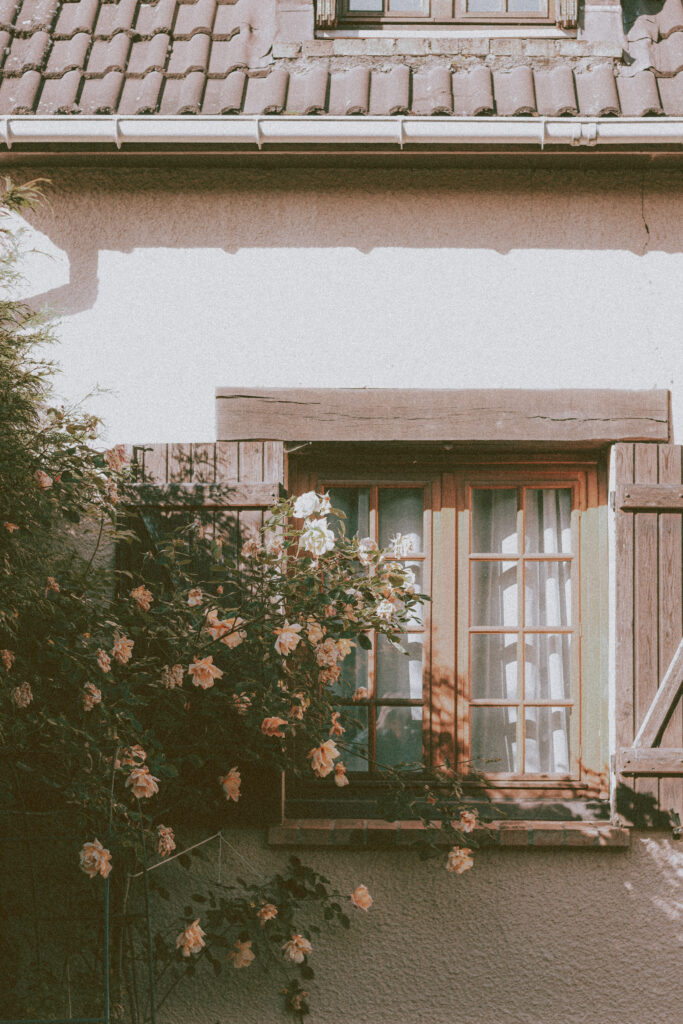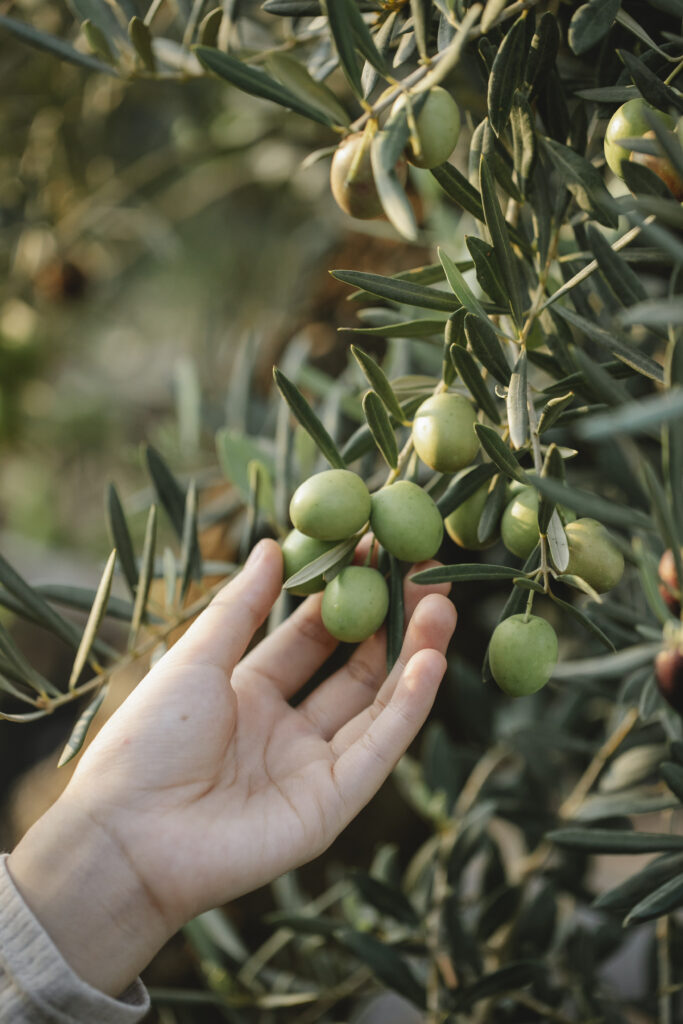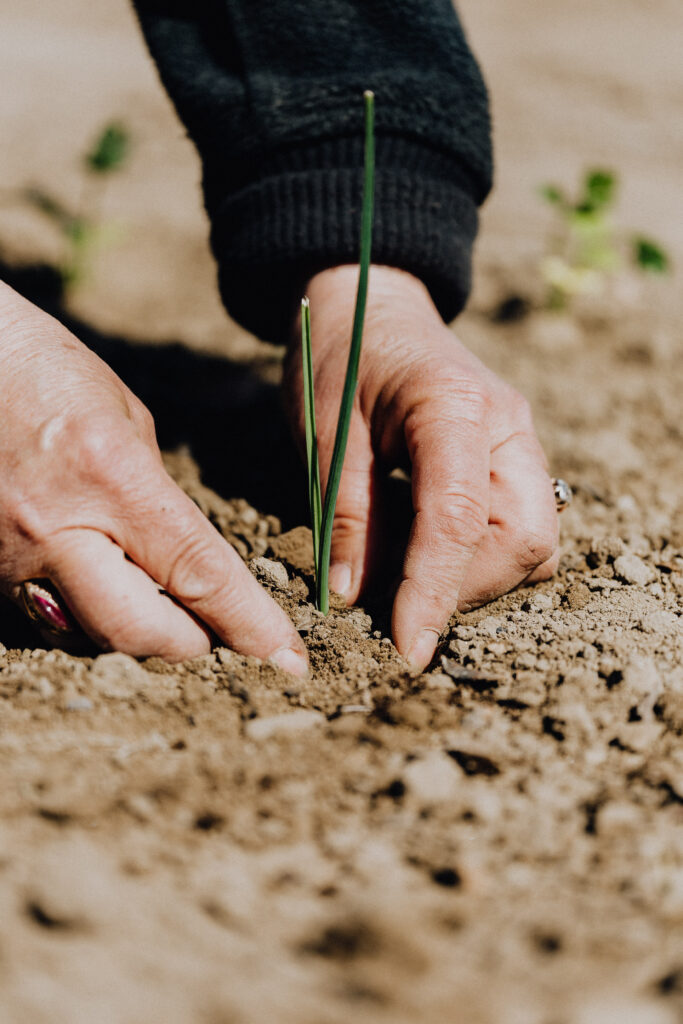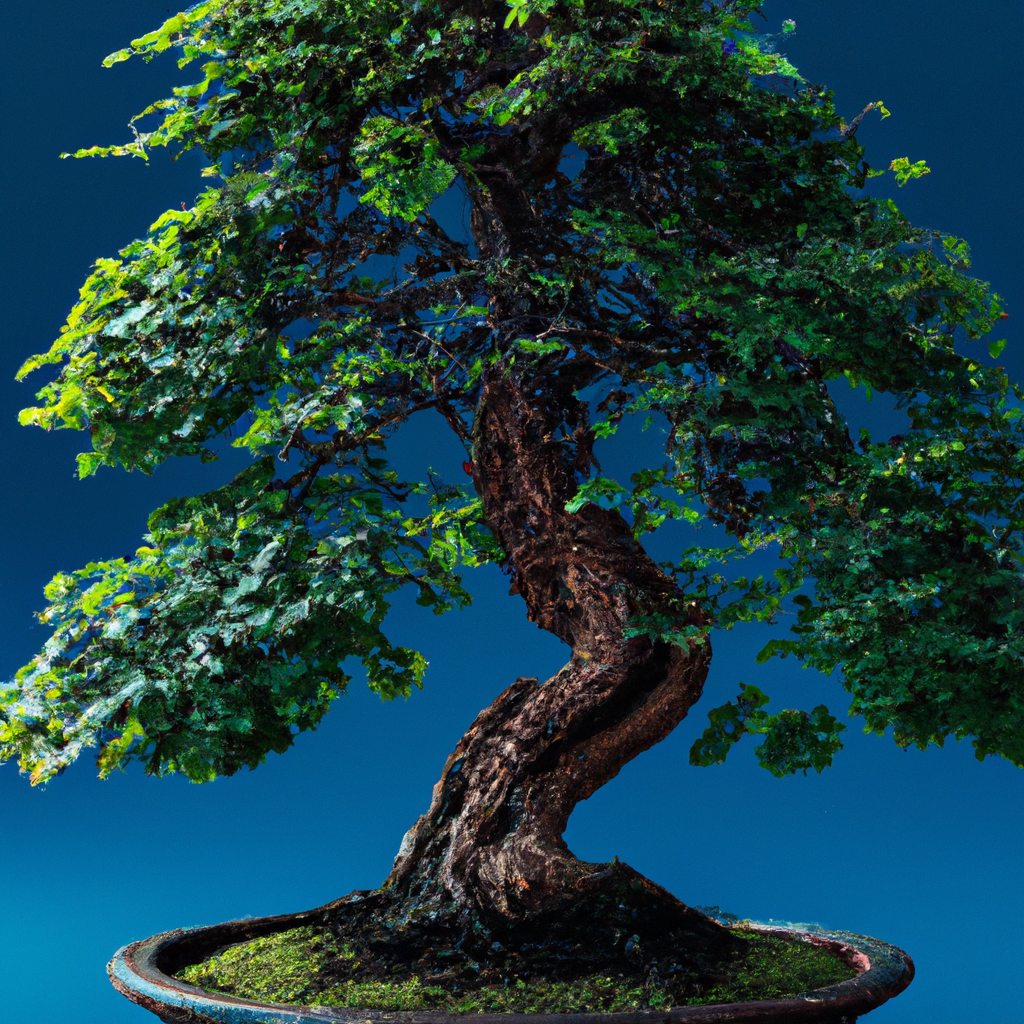
In this article, we will explore the fascinating world of Elm Bonsai trees and how they can be successfully adapted to various climates. Elm Bonsai, known for their delicate beauty and intricate growth patterns, have enchanted plant enthusiasts for centuries. Whether you live in a hot and humid climate or a colder region, we will provide you with expert tips and techniques to ensure your Elm Bonsai thrives and flourishes in its new environment. So, let’s embark on this journey together and discover the secrets to adapting Elm Bonsai trees to different climates!

Understanding Elm Bonsai
What is Elm Bonsai?
Elm Bonsai is a miniature version of the elm tree, meticulously cultivated and pruned to replicate the natural beauty and serenity of a full-sized tree. Bonsai, derived from the Japanese words “bon” meaning tray, and “sai” meaning planting, is an art form that originated in East Asia. It requires careful attention to detail and specific growth techniques to create these stunning miniature trees.
Benefits of Growing Elm Bonsai
Growing Elm Bonsai can be a rewarding and fulfilling hobby for enthusiasts of all skill levels. Here are some benefits of growing Elm Bonsai:
-
Aesthetic appeal: Elm Bonsai trees possess a unique beauty and elegance that adds a touch of tranquility to any indoor or outdoor space. Their intricate branches and delicate leaves create a visually captivating display.
-
Therapeutic value: Taking care of Elm Bonsai trees can have a soothing and calming effect on the mind. It provides an opportunity to connect with nature, reduce stress, and enhance overall well-being.
-
Learning experience: Cultivating Elm Bonsai teaches patience, discipline, and dedication. It allows you to learn about horticulture, tree anatomy, and the art of bonsai itself.
-
Customization: Elm Bonsai offers the opportunity to showcase your creativity and artistic skills. With careful pruning and shaping, you can create unique and personalized designs that reflect your style and taste.
How Climate Affects Elm Bonsai Growth
Climate plays a crucial role in the growth and survival of Elm Bonsai trees. Different climatic conditions can greatly impact the health and development of these delicate trees. Understanding how specific climates affect Elm Bonsai growth is essential for ensuring their well-being.
Selecting the Right Elm Bonsai Variety for Your Climate
When choosing an Elm Bonsai variety to grow in your area, it is important to consider the specific climate conditions. Here are some recommendations for different climates:
Cold Climate
In cold climates, it is necessary to select Elm Bonsai species that are cold-tolerant and can withstand freezing temperatures. Some suitable varieties include the Siberian Elm (Ulmus pumila) and the Chinese Elm (Ulmus parvifolia).
Hot Climate
For hot climates, heat-resistant Elm Bonsai species are ideal to ensure their survivability. The American Elm (Ulmus americana) and the Lacebark Elm (Ulmus parvifolia var. glabra) are good choices for such climates.
Humid Climate
In humid climates, where fungal diseases are common, it is recommended to choose Elm Bonsai species with good resistance to such diseases. The Zelkova Elm (Zelkova serrata) and the Winged Elm (Ulmus alata) are suitable options.
Dry Climate
In dry climates, selecting Elm Bonsai species that can tolerate drought conditions is crucial. The Siberian Elm (Ulmus pumila) and the Chinese Elm (Ulmus parvifolia) are known for their ability to withstand dry climates.
Temperate Climate
For temperate climates, where the weather is moderate, various Elm Bonsai species can thrive. The Japanese Elm (Zelkova serrata) and the Grey Elm (Ulmus carpinifolia) are well-suited for such climates.
Preparing Elm Bonsai for Different Climates
Understanding Your Climate
Before preparing your Elm Bonsai for a specific climate, it is essential to thoroughly understand the climate conditions in your area. Factors such as temperature range, humidity levels, sunlight exposure, and rainfall patterns all play a role in determining the care requirements for your bonsai.
Adapting Elm Bonsai Care Practices
Once you have a good understanding of your climate, it’s important to adapt your regular bonsai care practices accordingly. This includes adjusting watering frequencies, fertilizer application rates, and pruning schedules to suit the specific needs of your Elm Bonsai in your climate.
Providing Adequate Sunlight
Sunlight is a vital component for the growth and development of Elm Bonsai. Depending on your climate, you may need to provide varying amounts of sunlight. In hotter climates, it is crucial to provide partial shade during the hottest parts of the day to prevent leaf burn and dehydration.
Maintaining Optimal Moisture Levels
Moisture management is critical for Elm Bonsai, as different climates have varying moisture requirements. In humid climates, where excess moisture can lead to fungal diseases, it is important to ensure proper drainage and avoid overwatering. In dry climates, regular watering and humidity maintenance are necessary to prevent dehydration.
Protecting Elm Bonsai from Extreme Temperatures
Extreme temperatures can be detrimental to the health of Elm Bonsai. In both hot and cold climates, it is important to protect them from temperature extremes. This can be achieved by providing shade structures, insulation during winter, or relocating them indoors during severe weather conditions.
Applying Appropriate Fertilization
Fertilization needs to be adjusted based on the specific climate conditions and the growth stage of the Elm Bonsai. In colder climates, fertilization should be reduced during dormancy, while in hotter climates, nutrient requirements may be higher. It is essential to use a balanced fertilizer and follow the recommended dosage to avoid over or underfeeding.
Cold Climate Adaptation
Winter Protection Techniques
In cold climates, winter protection is crucial for the survival of Elm Bonsai. This involves techniques such as mulching the soil surface to insulate the roots, wrapping the trunk with a protective material, and placing the tree in a sheltered location away from freezing winds.
Selecting Cold-Tolerant Elm Bonsai Species
To survive harsh winter conditions, it is important to select Elm Bonsai species that are cold-tolerant. Species such as the Siberian Elm (Ulmus pumila) and the Chinese Elm (Ulmus parvifolia) have good resistance to cold temperatures and can endure freezing conditions.
Adjusting Watering and Fertilizing
During winter, Elm Bonsai trees go into dormancy, and their watering and fertilizing requirements change. Watering should be reduced to prevent root rot, and fertilization should be halted altogether. This allows the tree to conserve energy and prepare for the dormant period.
Ensuring Sufficient Natural Light
Even in winter, Elm Bonsai trees still require adequate sunlight. It is important to position them in a location where they can receive maximum sunlight exposure during the shorter daylight hours. If necessary, supplemental fluorescent or LED lights can be used to provide additional light.

Hot Climate Adaptation
Protecting Elm Bonsai from Intense Heat
In hot climates, protecting Elm Bonsai from intense heat is crucial to prevent scorched leaves and dehydration. Placing the bonsai in a shaded area during the hottest part of the day, such as under a canopy or a shade structure, helps reduce direct sunlight exposure.
Using Shade Structures or Cloth
To protect Elm Bonsai from excessive heat, shade structures or cloth can be used to create a shaded environment. This helps to regulate the temperature and prevent the bonsai from overheating. However, it is important to ensure adequate air circulation to prevent fungal diseases.
Watering Strategies for Hot Climates
In hot climates, Elm Bonsai trees may require more frequent watering to prevent dehydration. Checking the soil moisture levels regularly and watering when the soil feels slightly dry is crucial. It is important to water thoroughly, ensuring that the water reaches the roots.
Avoiding Overheating of Root System
The root system of Elm Bonsai is susceptible to overheating in hot climates. To prevent this, the bonsai should be placed on a heat-insulating mat or surface. This helps to regulate the temperature and protect the roots from excessive heat.
Humid Climate Adaptation
Preventing Fungal Diseases
In humid climates, fungal diseases can pose a significant threat to the health of Elm Bonsai. To prevent this, it is important to maintain proper airflow and reduce excess moisture around the tree. Avoiding overwatering and providing adequate air circulation helps to prevent fungal growth.
Controlling Moisture Levels
Humid climates often have high moisture levels, which can lead to waterlogged soil and root rot. Proper drainage is essential to prevent these issues. Using well-draining bonsai soil and ensuring proper watering practices can help control moisture levels and maintain a healthy root system.
Providing Adequate Air Circulation
To prevent fungal diseases and promote healthy growth, adequate air circulation is essential. This can be achieved by placing the bonsai in an open area with good airflow or using fans to create gentle air movement. Avoid placing the bonsai in dense or overcrowded locations.
Choosing Suitable Elm Bonsai Species
When growing Elm Bonsai in a humid climate, it is important to choose species that have good resistance to fungal diseases. The Zelkova Elm (Zelkova serrata) and the Winged Elm (Ulmus alata) are well-suited for humid conditions and exhibit good resistance to fungal infections.

Dry Climate Adaptation
Implementing Proper Watering Practices
In dry climates, proper watering practices are crucial to prevent dehydration of the Elm Bonsai. It is important to water regularly, ensuring that the water reaches the entire root system. Mulching the soil surface can help retain moisture and reduce evaporation.
Maintaining Humidity
Dry climates often have low humidity levels, which can cause the bonsai to dry out quickly. Maintaining humidity around the tree can be achieved by placing the bonsai on a humidity tray filled with water or periodically misting the leaves with water to increase humidity levels.
Shielding Elm Bonsai from Excessive Sun
Excessive sun exposure in dry climates can lead to leaf burn and dehydration. Providing partial shade during the hottest part of the day or using shading cloth can help protect the Elm Bonsai from direct sunlight and reduce the risk of damage.
Mulching and Soil Moisture Retention
Mulching the soil surface helps retain moisture and regulate soil temperature in dry climates. Use organic materials such as bark chips or sphagnum moss to create a layer of mulch around the bonsai. This helps to prevent rapid evaporation and maintains a more consistent soil moisture level.
Temperate Climate Adaptation
Understanding Seasonal Changes
In temperate climates, where the weather is moderate, Elm Bonsai experiences seasonal changes. Understanding these changes and adapting care practices accordingly is crucial. The tree’s growth and dormancy periods will vary in different seasons, requiring adjustments in watering, fertilizing, and protection techniques.
Adjusting Watering and Fertilizing
During the growing season, Elm Bonsai in temperate climates may require more frequent watering and regular fertilization. As the tree enters its dormancy period, watering should be reduced, and fertilization should be halted to match its natural growth cycle.
Protecting from Frost and Freezing
In temperate climates, frost and freezing temperatures can occur during the winter months. To protect Elm Bonsai from such conditions, it is important to bring the bonsai indoors or place it in a sheltered area that provides protection from extreme cold.
Providing Shelter in Extreme Weather
In temperate climates, extreme weather events such as strong winds, heavy rain, or hailstorms can occur. Providing adequate shelter during such events is essential to protect the Elm Bonsai from damage. Placing the bonsai under a canopy or in a protected area can help safeguard it from severe weather conditions.

Elm Bonsai Care Tips for Any Climate
Ensuring Well-Draining Soil
Regardless of the climate, Elm Bonsai requires well-draining soil to prevent waterlogged roots. Using a bonsai-specific soil mix that contains a combination of organic matter and inorganic materials ensures adequate drainage while retaining necessary moisture.
Promoting Healthy Root Growth
Regular root pruning and repotting are essential for promoting healthy root growth in Elm Bonsai. Root pruning helps maintain a compact root system, while repotting should be done every 2-3 years to refresh the soil and prevent the roots from becoming pot-bound.
Pruning and Shaping Techniques
Pruning and shaping are vital for maintaining the desired form and structure of the Elm Bonsai. Regular pruning helps control growth, removes dead or unhealthy branches, and encourages ramification. Wiring can also be used to shape the tree by carefully bending and positioning branches.
Regular Pest and Disease Monitoring
In any climate, pests and diseases can pose a threat to the health of Elm Bonsai. Regularly inspecting the tree for signs of pests, such as aphids or spider mites, and promptly treating any infestations helps prevent the spread of pests and minimizes damage.
Maintaining Proper Nutrient Levels
Balanced nutrition is crucial for the health and growth of Elm Bonsai in any climate. Using a suitable bonsai fertilizer that provides the necessary macro and micronutrients ensures optimal nutrient levels. Regularly monitoring the tree’s nutritional needs and adjusting the fertilization accordingly is important.
Periodic Repotting
Periodic repotting is necessary for Elm Bonsai to maintain healthy growth. Repotting allows for the replenishment of nutrients, root pruning, and maintaining proper drainage. The timing of repotting depends on the specific species and growth rate of the bonsai.
Conclusion
Growing Elm Bonsai can be a rewarding and enjoyable experience in any climate. By understanding the specific climatic conditions of your area and adapting the care practices accordingly, you can create a thriving and captivating bonsai tree. Whether you live in a cold, hot, humid, dry, or temperate climate, there are suitable Elm Bonsai species and techniques that can help you achieve success. With patience, dedication, and a little bit of knowledge, you can cultivate magnificent Elm Bonsai that will bring beauty and serenity to your surroundings.
